1945 Ward LaFrance Wrecker
It's hard to imagine that those who designed World War II’s vehicles could have foreseen the long postwar lives enjoyed by many of the survivors. The 1945 Ward LaFrance Heavy Wrecking Truck M1A1 featured here is a good example—after making it through the conflict, it remained in Europe and eventually found its way to New Jersey, but that doesn’t quite mean that it’s enjoyed a 63-year retirement.
When the war ended, the American military didn’t immediately ship all of its equipment back home and of the vehicles that remained behind, not everything continued to serve with U.S. forces. The Ward LaFrance’s history is slightly sketchy, but it definitely was among the vehicles left behind to work in Europe.
“All of the (data) plates for using the winches and the equipment were in Italian,” said its current owner, Sven Johnson of Belvidere, New Jersey. “The U.S. gave it to NATO, NATO loaned it to the Italian Army.”
One point where the truck has an unclear past regards the year it was built. The later that was, the less time it would’ve served in the war and, therefore, the better its chances of survival. So its registration as a 1945 model based on one interpretation of its serial number makes sense. But then, there’s another interpretation.
“When we were in England,” Johnson said, “a guy was showing us vehicles that had more recent serial numbers and he said, ‘No, that’s not it, that number doesn’t mean that. It was a lot type of number.’ We gave him the number we had and he said it’s probably a ’44.”
“There’s not a lot of information on them,” said Bob Rubino, owner of MilSpec Vehicle Restoration in Belvidere. “Ward LaFrance never built anything in huge quantities. That’s probably the only thing it ever built in series production; it was more of a one-of-a-kind custom-built truck-manufacturer. It made about 4000 of these.”
LaFrance Confusion
The company, established in 1918 in Elmira, New York, is best remembered for its fire equipment. Unfortunately for those who try to keep facts straight, Elmira also was home to the almost-unrelated American LaFrance and that company, too, is known for fire equipment.
American was the older of the two and beyond the similarity in location and product line, its only connection to Ward was that A. Ward LaFrance—who used most of his name when he founded the younger company—was a member of the family that controlled American.
They Both Served In Korea
Like other truck-builders of nearly every size, Ward LaFrance found itself with contracts to produce military vehicles for the Allies in World War II.
In fairly typical fashion, the company was not alone in building the M1A1, as Kenworth also had a contract for the same truck.
“Most of them probably went to Europe,” Johnson said, “because there was probably more recovery work to do in Europe than in the Pacific. On an island, a vehicle like that is too big. Some of them, obviously, did get there and, of course, we know for sure that they were in Korea.” And how do we know that? “Officially,” Johnson explained, “we had two in the company.”
That was during 1952 and 1953, when he was serving in Korea with the 740th Ordnance Battalion in the U.S. Army’s 40th Infantry Division. Ward LaFrances identical to the one he now owns were key to his ability to do his job.
“The basic unloaded weight of that vehicle is like 32,000 pounds,” he said, “and the loaded weight of it is 39,000. All of that is equipment, blocks, tackle, chains, the tools to work with, anything from a sledgehammer to a screwdriver.”
The fact that it carried more than six tons of tools and equipment emphasizes that it was more than a mere tow truck or wrecker. Despite their military name, Johnson said that they served primarily as mobile cranes.
“They were like extra arms for us,” he explained. “It was a heavy enough vehicle that it could move tanks around. Without them, I don’t know what we would’ve done. (Maybe) get an awful lot of guys and a rope...
“The crane was invaluable. We changed all kinds of artillery pieces; basically, you weren’t supposed to do it, but we rebuilt them in the field because that’s what we had to do. We took off tank turrets, we swapped turrets around because the tank was out of action. You don’t have anything else out there that you can pick up tanks with and you can’t ship it back to Detroit to get a rebuild when you need it tomorrow or tonight, so we used it for doing all kinds of repair work on heavy equipment. That, along with winching out vehicles that were irretrievably stuck.”
Anyone who’s seen a tank from that era should be able to make a good guess as to the truck’s capabilities and by extension, its size. There’s something else to think about, though, and that’s the statement about having used them “in the field” because that’s where the repairs had to be made.
“We’d just put ourselves up with the infantry and the artillery,” Johnson explained, “because that’s where we did all our work.
“We did call it ‘working in the field,’ but we didn’t do it ‘in place’ necessarily because it was just too vulnerable.
“Sometimes, you’re doing it at night and you don’t want any more light than you have to have, certainly not going around with big flashlights and floodlights shining on everything. Sometimes, we’d yank them back...I used to keep extra artillery pieces so I’d just haul one up. I even had spare tanks, so I’d just give them a replacement and take the other one back... You needed them, so you found ways to have them.”
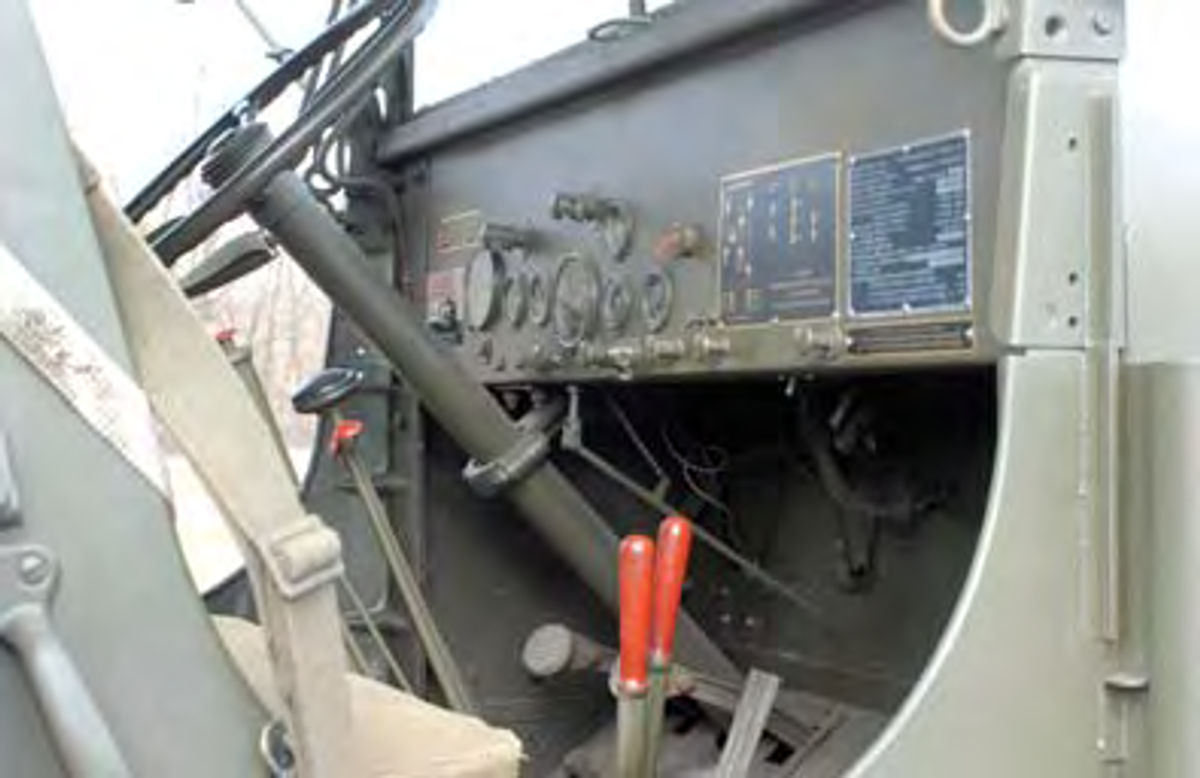
He Shopped Around for His Truck
M1A1s like Johnson’s aren’t common, but he’d looked at others before buying his in 2005.
“We’d been seriously looking,” he said, “but they were always at the wrong
end of the country or they were over in Europe. I suppose you could, in theory, drive it home, but you’d have to have plenty of time.”
“And gas,” Rubino added. “It’d be cheaper to haul it than feed it. It definitely would be.”
As it turned out, Johnson didn’t have to deal with any of that because after finishing its service with the Italian Army, the Ward LaFrance had been brought back to the United States and was at Army Cars USA in Spooner, Wisconsin. One of Rubino’s customers bought it, but then decided to sell it.
“I knew what he paid for the wrecker,” Rubino recalled, “and I knew what the shipping was. I knew Sven always wanted one and I said ‘Sven, here’s your chance. You can’t beat this price.’”
Besides the unbeatable price, the Ward LaFrance had another very large point in its favor in that the only thing keeping it from being driveable was a stuck shifter. More accurately, it was driveable, but until the transfer case could be shifted out of low range, it wasn’t going to get anywhere in a hurry.
Johnson spoke of his first time behind its wheel more than 50 years after he’d last driven its siblings.
“Well, in view of the time difference and so forth, boy, it’s a hell of a big vehicle, isn’t it?” he said. “That was interesting, but it was probably the last time I drove it because I get pushed out of the way most of the time. Bob drives it and my son, Eric, he loves it. That’s the first vehicle he jumps into.” It doesn’t get out on the road very often, of course, but it does do its share of work. Since it’s stored in a building on the same property as Mil-Spec, Rubino sometimes uses it to do exactly what it was built to do. Most recently, that involved an M4A1E8 Sherman tank. (The truck and tank are seen in the photo at the top of page 22.)
“We’re restoring it,” Rubino said. “The tracks are coming off, the nose is coming off. It stays intact because it’s a hull, but everything’s got to come off.”
And everything is heavy. The tank’s nine-cylinder, 975-cubic-inch Continental R-975-C4 air-cooled radial weighs roughly 1800 pounds and it’s not even close to being the Sherman’s heaviest component.
“For this,” Rubino said, “I’d probably have had to rent a small crane to pull the engine out. Definitely, when we pulled the turret out and the gun out, every time, we’d have to hire a crane or rent a crane to come and pull this stuff off. We pulled the turret off of this and that turret weighs about six tons.”
The Ward LaFrance undoubtedly has the power and the strength to handle a load like that—it’s done the same work in two wars and probably in other places and at other times—but it’s not a direct substitute for a modern crane.
“This takes a little more finesse,” Rubino explained. “It’s a crashbox, so
you can’t really feather things. When you put the power-takeoff in to run the boom, you put the transfer case into neutral and you put the main box in third gear. Then you engage the PTO.
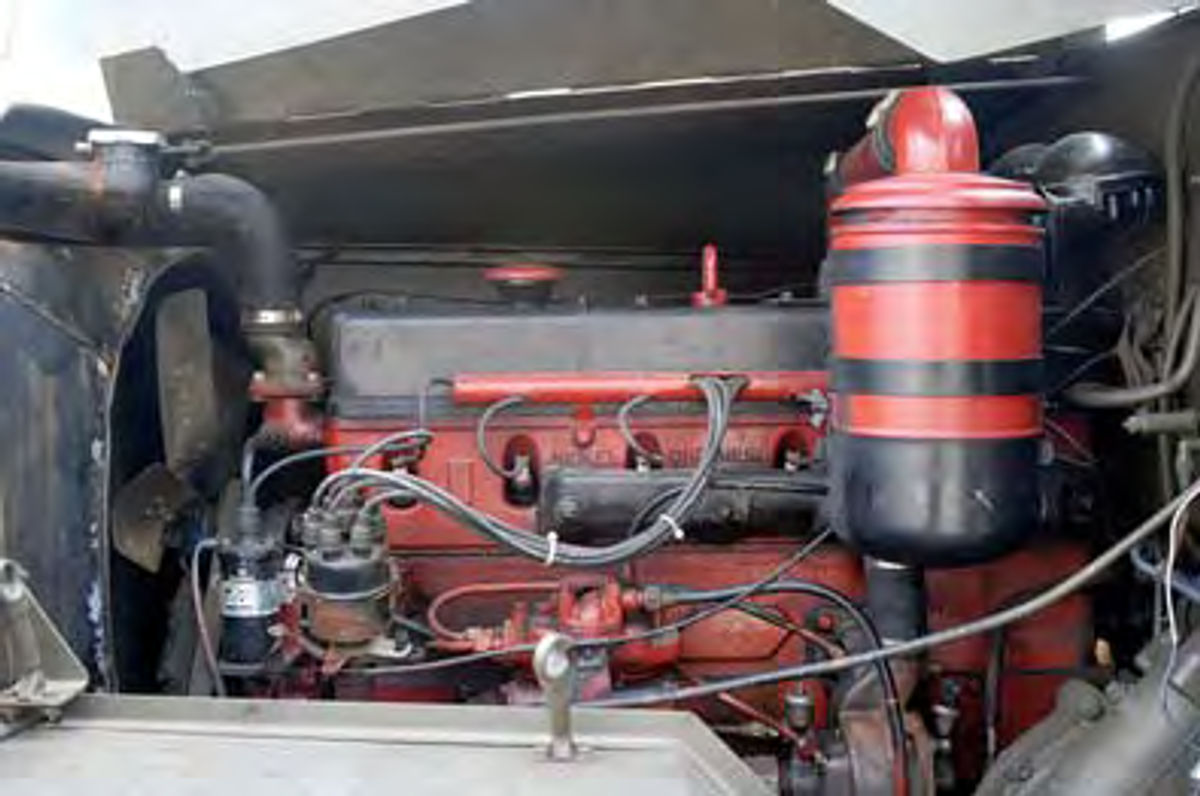
“When I lowered the engine, I put the main box into second to slow it down. That’s the only way you can really feather, you change the gears in the transmission. You don’t shift gears in the trans when you put the PTO in. You’d learn that by experience. That’s not in any manuals.”
The reason for all of that is that the truck and its Gar Wood wrecker operate mechanically while the modern equivalent relies on hydraulics. That translates to controls that are much more easily operated with perhaps less need for finesse, but Rubino said that learning the Ward LaFrance’s basics is not difficult.
“Everything’s marked,” he explained. “Three levers: hook up-hook down, swing left-swing right, boom up-boom down.”
One day of practice wouldn’t create an expert, he agreed, but would likely enable an operator to handle relatively uncomplicated tasks.
“You’d be able to pull a motor out,” he said. “Hydraulic is better, no question about it, but that doesn’t mean this thing is no good and that it’s not usable.”
Gears do have one advantage over hydraulics; they’re generally tougher.
“Hydraulics are pretty vulnerable when people are shooting at you and pieces of fragments are flying around,” Johnson said. “Hoses get nicked and then you’re out of business, whereas with a cable-type vehicle, you can help yourself out a lot.”
Either design requires regular maintenance and inspection, especially with the loads that a truck like the Ward LaFrance might handle.
“When something like that fails,” Rubino said, “it can be dangerous.”
It can also be dangerous if not used properly, as the truck can lift or otherwise work in a range of conditions, but only if it’s set up correctly. Army manuals explain how to do that and information plates on the body provide some of the details. It’s enough that it could be overwhelming, but since a collector truck doesn’t actually need to work, its owner can choose to all but ignore everything behind the cab.
To do so, however, is to miss out. Beyond its history, a good portion of the Ward LaFrance’s appeal lies in the fact that it’s essentially a large self-propelled machine that wasn’t meant to carry a load of cargo or passengers; it was designed instead to get itself, its operator, its tools and its equipment to a site where its services were needed. If the vehicle it was assisting required more than could be done on the spot, the Ward LaFrance could then tow it to wherever it had to go and would likely be involved in the repair work once it got there.
“We were given things to do and there was no way to do them except with these trucks,” Johnson said.
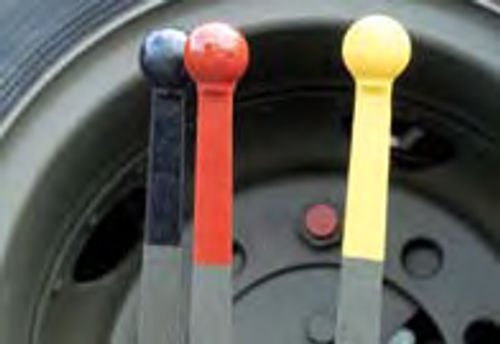
Military Life Kept Them In Shape
This will probably sound odd to a collector unfamiliar with military vehicles, but the fact that these trucks survived World War II and Korea, served for years afterward and were generally well maintained until they were released for civilian sale, makes finding a decent M1A1 easier than finding a bad one.
“Anything that was sold commercially here after the war has been used up and scrapped,” Rubino said, “so the ones that are available are the ones that were released 15 or 20 years ago. Most of them that are in private hands now were released from foreign governments in the ’90s. They were well maintained and so they’re not worn.
“Once they got into collectors’ hands, nobody’s used them. We’re the only people that are really using a Ward LaFrance for what it does. Everybody else who’s a collector, what are they going to lift with it?”
There’s still a remote chance of coming across such a truck in a salvage yard, but Rubino described its likely condition.
“It’s going to be worn out, worked to death,” he said, “and it probably won’t have the right engine in it. The first thing that went was that great big thirsty gasser. About 2.5 miles to the gallon, uphill, downhill, doesn’t matter.”
Parts Are Available
The amount of use an M1A1 would be given by the average collector—especially at 2.5 miles per gallon—would not wear it out for a long, long time, but sooner or later, parts would need to be replaced. The Delco ignition, for example, isn’t particularly daunting and basic parts for the Continental engine and Fuller transmission should be available without extreme difficulty, and Rubino said that Army Cars USA has a good inventory of specialized parts to keep the truck running.
He said that components such as switches and lights interchange with other contemporary military vehicles, but added that the Ward LaFrance’s 12-volt electrical system is unusual. Furthermore, a collector inexperienced with large trucks would find himself learning about air brakes, and some non-critical pieces might be missing.
“It’s supposed to have a siren up on the left front fender,” Rubino said, “a siren-and-flashing-red-light combination. The two things they’re always missing are the siren and if you notice on the left side, right where the controls are for working the boom, there’s a regular toolbox there. It was a regular cabinet; lift it up, socket drawers and everything. Those are always missing.”
It Gives An Upper-Body Workout
Utility and parts are valid concerns, but the real make-or-break factor for many could be the truck’s size.
As we previously noted, the Ward LaFrance is big. Look carefully at the photos and consider that its headlights are at roughly eye level with a tall individual, then notice that small step above the running board. Compare its 181-inch wheelbase to a Chevy Tahoe’s 202-inch overall length and then think about the fact that the Ward LaFrance is 117 inches high. It’s going to need some serious storage space and when it comes to heading out on the road with it, as Johnson said, “Boy, it’s a hell of a big vehicle, isn’t it?”
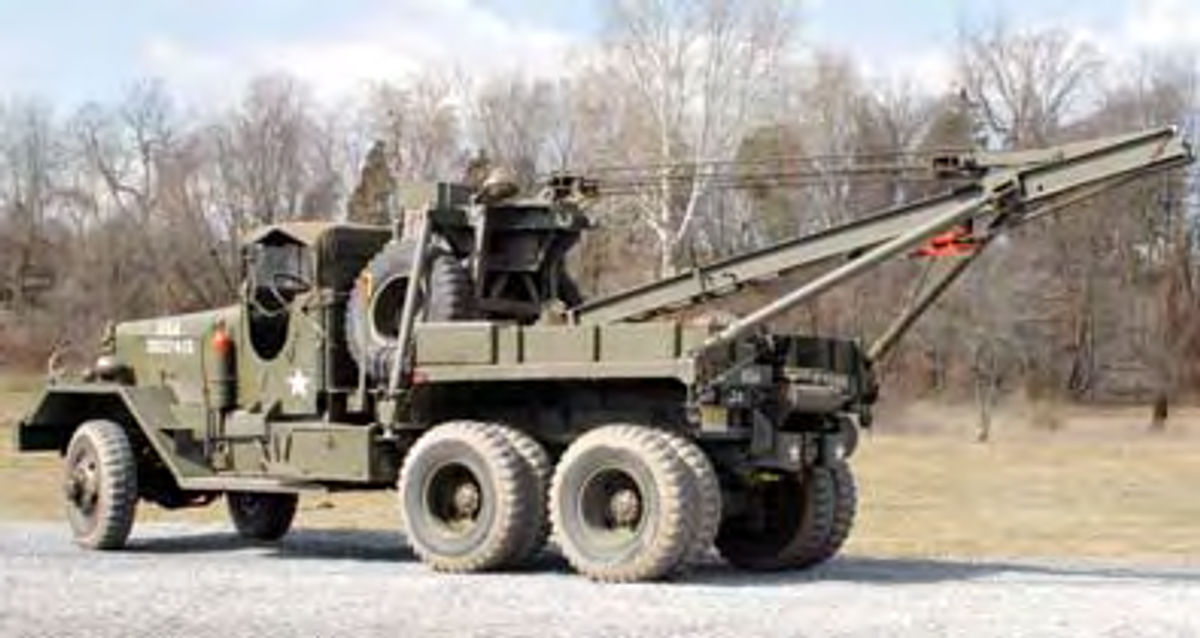
Almost any older heavy truck is a challenge when it comes to very-low-speed maneuvers, but that driver who (for whatever reason) is really seeking the ultimate test might be interested in the following statement from “TM 9-796 War Department Technical Manual,” which is the Ward LaFrance’s shop and operating manual.
“Single pneumatic tires are used on the front axle, and dual pneumatic on the rear. However, provision is made for mounting dual wheels and tires on the front axle.”
Steering it with dual front wheels must require more-than-average strength, but Rubino noted that in cold weather, other challenges appear. “When it’s cold,” he said, “it takes a lot of effort just to shift it. There’s so much oil in the three differentials, the transfer case, and the transmission, that on a cold day, you’ll have to drive it for about 40 miles before the oil warms up. Once that oil warms up and stops putting resistance on all the moving parts, it’s like you’ve gained an extra 50 horsepower. All of a sudden, the truck comes alive...
“When it’s really cold and you start it, you have your foot on the clutch. You’ve got to let the engine warm up a little and pull the throttle out or when you take your foot off the clutch, you’ll sometimes stall the motor just with the resistance from the transmission.”
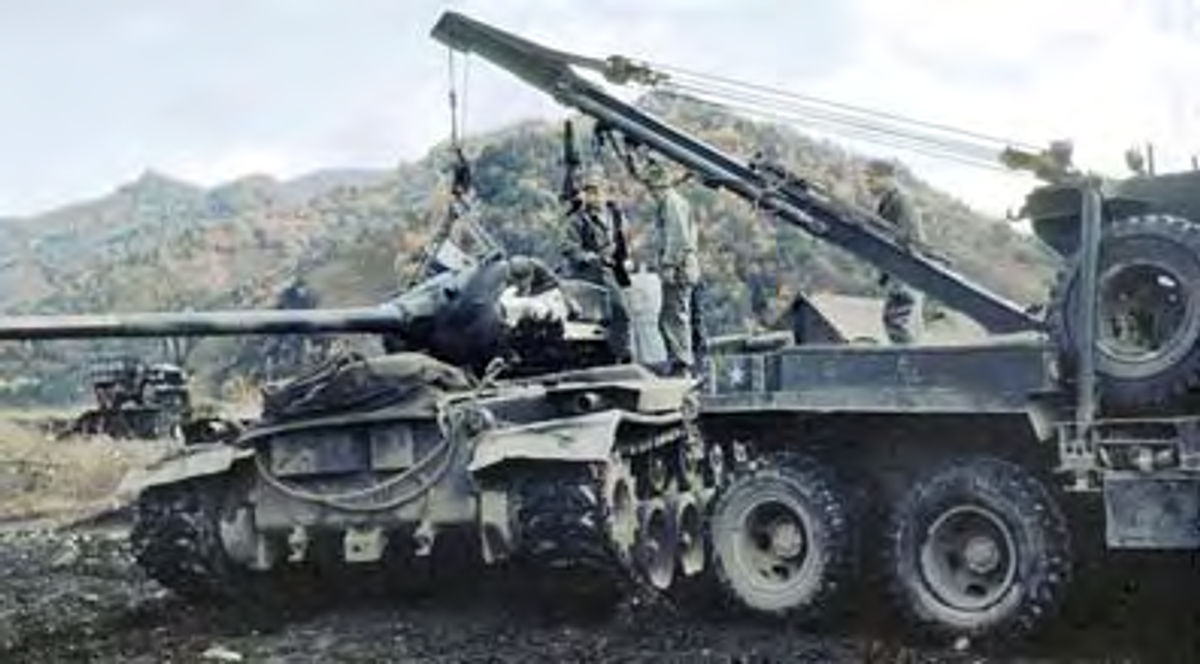
The Ward LaFrance’s top speed is 45 mph and he said that it doesn’t get there quickly, but with its five-speed transmission and no need to split shifts, it’s not a complicated truck out on the road.
“I enjoy driving them,” Rubino said. “It’s a little bit of a workout, but it’s fun. It’s fun to drive, it’s got a good sound to it and it’s actually quite a smooth-riding truck. And it’s a very heavy truck. The truck itself is the load.”
Even if he doesn’t get many chances to drive it, Johnson won’t sell the Ward LaFrance. He said that he’s had offers on it and turned them down. “I’m a buyer,” he explained, “not a seller.”
“It’s as impractical as owning anything,” Rubino observed. “You don’t need it, so it’s impractical. People collect bottle caps. That’s impractical. Just because it’s impractical is no reason not to own it.”
















